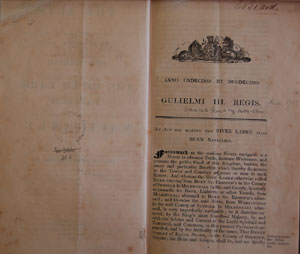
Introduction to the Act, extolling the benefits of trade, current state of the river, and giving Henry Ashley power to proceed. |
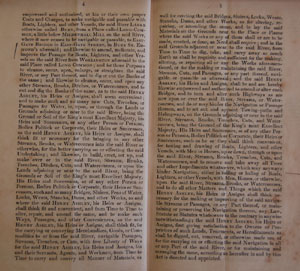
Defines the works that Ashley can carry out on the river. |
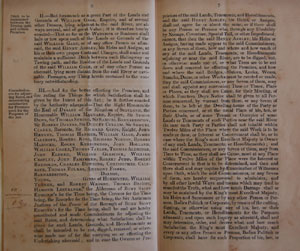
Specifies that a ditch must separate the river from lands of William Gage, and others. Appoints a governing Commission to adjudicate and set rates. |
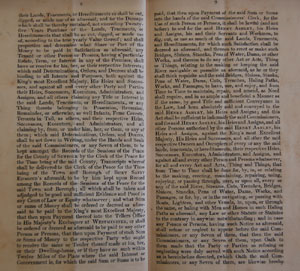
More on the work of the Commission. |
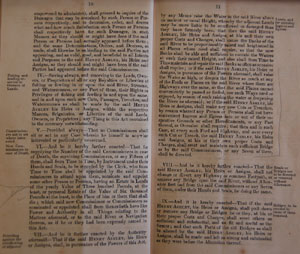
Ashley to have no power over fishing and wildfowling on the river. Commissioners not to act in cases where they have an interest. Provides for new Commissioners. Ashley to provide flood banks and bridges in places which would be adversely affected by his works, and not to remove old bridges without replacement. |
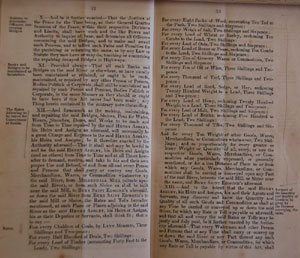
Bridge disputes to be settled by JPs. Existing repairing obligations on banks and bridges to remain. Sets the charges Ashley may levy on the river traffic to repay his investment. |
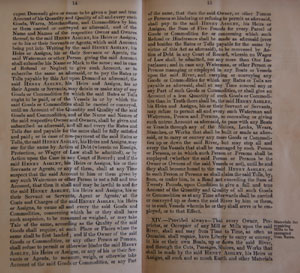
Empowers Ashley to enforce payment of his tolls, and specifies remedies that he may take. Exempts millers from paying tolls for carrying mill repair materials on the river. |
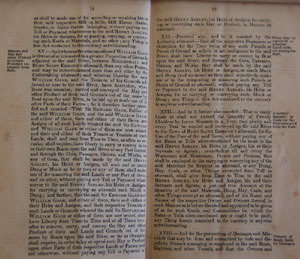
Gives William Gage and his tenants the right to convey agricultural produce, dung and hay, along the river free of tolls. All other adjacent landowners empowered to convey dung and muck for manuring their lands free of tolls. Twenty chaldrons of coal a year for the Bury Poor also to be free of tolls. |
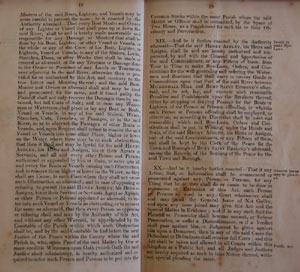
Owners of vessels to be liable for any damage to Navigation locks and installations. Ashley and Commissioners may make bye-laws. Actions to be enforceable in a court of law, treating this a public act of parliament. |
|
| 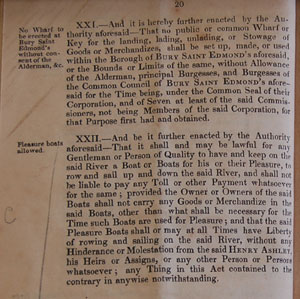
No wharf to be set up in Bury St Edmunds without consent of the Alderman and Council of Bury. Gentlemen and persons of quality allowed to keep a pleasure boat on the river without payment of tolls. |
|


